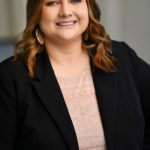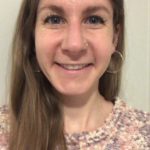
MSN, MPH
Channon earned her undergraduate degree from DePaul University and while there she served as a Health Educator for Peer Health Exchange, volunteered in outpatient surgery at Lurie Children’s Hospital, then called Children’s Memorial Hospital, and worked as a children’s fitness instructor for Stretch-N-Grow throughout Chicagoland. She received her Master of Science in Nursing from the University of Illinois at Chicago (UIC) College of Nursing and recently finished her Master of Public Health in Community Health Sciences concentrating in Maternal and Child Health (MCH) at UIC School of Public Health. Channon was an intern for the Mothers and Babies Program, where she did research on the impact of the program on pediatric healthcare utilization. She will continue on this fall for her Certified Nurse Midwife degree and Doctor of Nursing Practice in Pediatric Primary Care at the University of Michigan. Channon served as a mentor for the Minorities in Healthcare Mentorship Program and an MCH Undergraduate Mentor at UIC. Channon wants to impact the lives and health of mothers and children by reducing disparities in mortality and morbidity in birthing outcomes and by extension taking care of entire families and communities. She believes taking care of women and making sure they go home with their babies and families is of great service to all mankind.
“Attending the Global Reproductive & Sexual Health Summer Institute 1 at the University of Michigan School of Nursing this May continually showed me more of the complex challenges that MCH populations face, the systems that serve them and how these very systems can cause harm instead of promote healing. One of the many important issues discussed at the institute included human trafficking; both sex 2 and labor 3 trafficking. This encouraged me to think about how these systems; healthcare, law enforcement, policies, government etc. increase and perpetuate harm. I also reflected on how we as a society can collaborate with these systems to protect the health and wellbeing of those impacted by human trafficking. Through many presentations and panels I gained more insight into this topic and developed a better understanding of reasoned resolutions for addressing this issue.
One panel that I will never forget, because of its multidisciplinary and my belief in the importance of such strategies, included Bridgette Carr, JD, from the University of Michigan Law School and its Human Trafficking Clinic 4 and Michelle Munro-Kramer, Ph D, CNM, FNP-BC, from the Univerisity of Michigan School of Nursing. Both spoke from their different perspectives and how they blended them to address the needs of clients who received services from the clinic. It was brought up that before consulting with health professionals on court cases, the health and social needs of clients went undocumented, a lot of the time unknown, because they are not deemed relevant to the case. This is where I believe that critical thinking and connecting disciplines is vital in guiding practice, policy, and research related to human trafficking and in general in order to holistically address the needs of individuals and populations. Integrating practices such as multidisciplinary teams to support in court cases both before and during trials and utilizing discretion is a powerful tool in impacting human trafficking. Creating policies with guided steps and action that seek to expunge records of victims of trafficking and further, finding ways to make this universal. This is necessary to stop the criminalization of people that further detriments their ability to thrive and heal in society.
I believe that some of the best critical thinking and action occurs when many perspectives and minds come together, including those impacted by what is being addressed. HEAL Trafficking works from a public health perspective in supporting survivors of trafficking and ending human trafficking; through advocacy, direct services, education and training, media and technology, protocols and research5. HEAL Trafficking’s executive director and co-founder Hanni Stoklosa, MD, MPH, spoke not only to the necessity to see that human trafficking is a public health issue but to realize that we are all part of making sure the world is healed of trafficking. There are over 40 million trafficked persons globally, 81% of these individuals are trapped in forced labor, 75% of trafficked persons are women and girls and 25% are children6. This is not only a public health issue but an MCH issue and I know that we as MCH leaders have the knowledge and competency to think critically about it, seek and create avenues to interrupt and end trafficking.”
~ Channon M. L. Campbell
Sources:
1. University of Michigan School of Nursing. (2019). Global Reproductive and Sexual Health Summer. Retrieved from https://nursing.umich.edu/academics/global-summer-institute.
2. Polaris. (2019). Sex Trafficking. Polaris Webpage. Retrieved from https://polarisproject.org/human-trafficking/sex-trafficking.
3. Polaris. (2019). Labor Trafficking. Polaris Webpage. Retrieved from https://polarisproject.org/human-trafficking/labor-trafficking.
4. University of Michigan Law School. (2019). Human Trafficking Clinic. University of Michigan Law Webpage. Retrieve from
http://www.law.umich.edu/clinical/humantraffickingclinicalprogram/Pages/humantraffickingclinic.aspx.
5. HEAL Trafficking. (2019). HEAL Trafficking. HEAL Trafficking Webpage. Retrieved from https://healtrafficking.org/.
6. Polaris. (2019). The Facts. Polaris Webpage. Retrieved from https://polarisproject.org/human-trafficking/facts.

